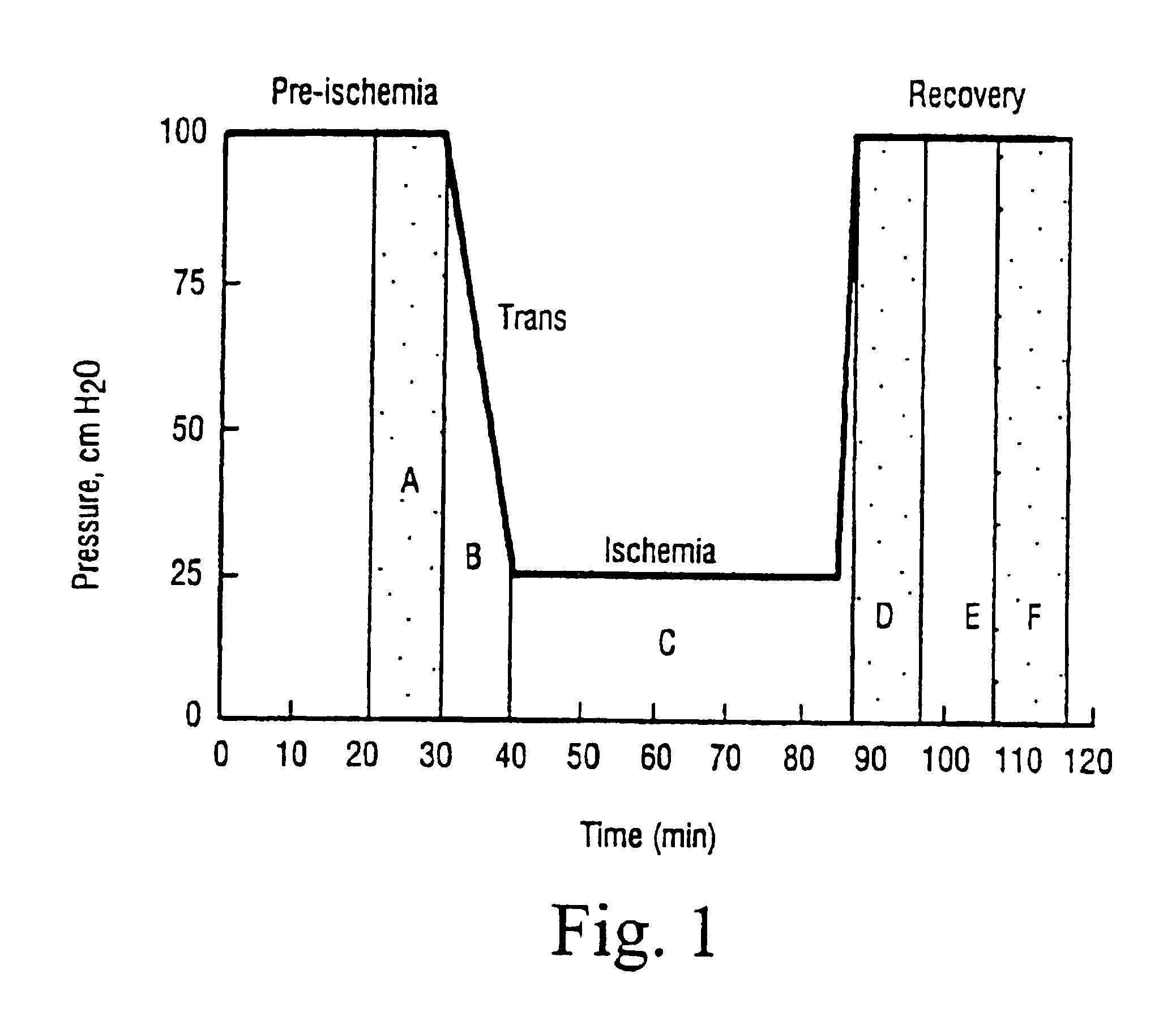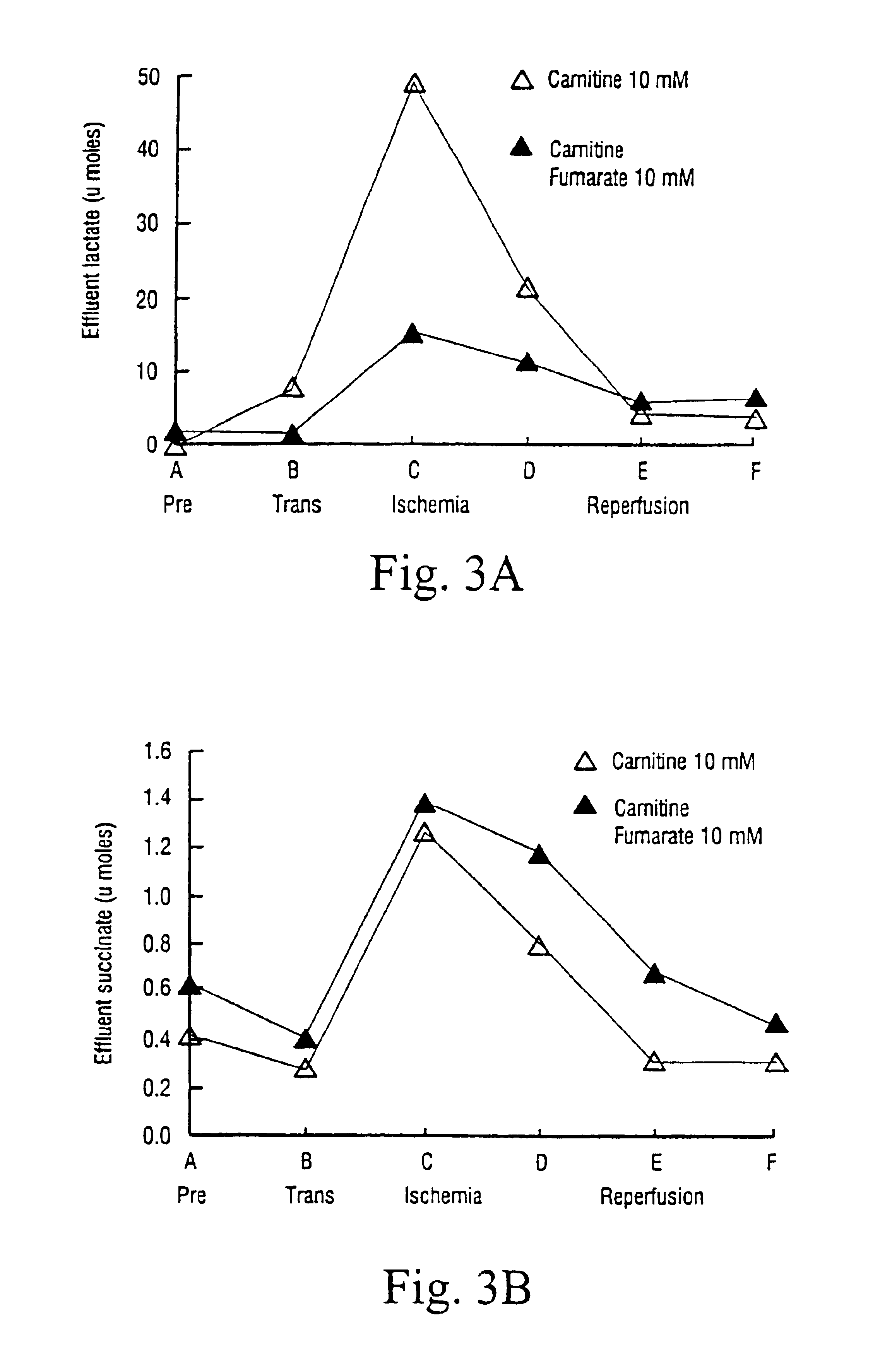Treating chronic uremic patients undergoing periodical dialysis
a technology for chronic uremic patients and periodical dialysis, which is applied in the field of treating chronic uremic patients undergoing periodical dialysis, can solve the problems of difficult to explain the persistence of some abnormalities in lipids, and achieve the effects of reducing the need, avoiding the maintenance or correction of carnitine deficiency, and reducing the risk of urethral toxicity
- Summary
- Abstract
- Description
- Claims
- Application Information
AI Technical Summary
Benefits of technology
Problems solved by technology
Method used
Image
Examples
example 1
[0044]Effect of the Administration of L-carnitine Fumarate on the Perfused Heart
[0045]In this example, the low-pressure or low-flow ischaemia model was used, which is a model recognised as valid for cardiac ischaemia (Bolukoglu. H. et al. Am. J. Physiol. 1996: 270; H817-26).
[0046]The treatment schedule is illustrated in FIG. 1., in which the letters A-F denote the heart effluent sampling times for the measurement of metabolites. The hearts are removed from the animals and mounted on a Langerdorff appliance. The perfusion medium replacing the blood was a Krebs-Heinsleit standard bicarbonate buffer containing glucose 12 mM as energy source for cardiac metabolism.
[0047]After 30 minute perfusion at a pressure of 100 cm of water, ischaemia was induced by reducing the perfusion pressure of the heart to 25 cm of water, thus reducing coronary flow from approximately 2 ml / min to approximately 0:3 ml / min. Reduction of the perfusion pressure gives rise to ischaemia, since the heart will pump t...
example 2
[0055]The procedures of example 1 were substantially repeated, with the addition of a treatment with carnitine alone as a further control.
[0056]The results are given in FIGS. 2-6, where:
[0057]FIG. 2 illustrates the effect of carnitine (A) and carnitine fumarate (B) on creatine phosphate and ATP. The data were evaluated after 40 minutes of ischaemia. CP indicates creatine phosphate and α,β and γ denote the phosphate peaks of ATP; as can be seen in part (A) of the figure, the ATP peaks are lacking in the absence of fumarate.
[0058]FIG. 3 shows the comparison between lactate (A) and succinate (B) released by the heart, as measured in the effluent. The lactate reduction indicates the favourable effect of carnitine fumarate. The low amount of succinate as compared to lactate indicates that the generation of ATP as a result of the reduction of fumarate to succinate is not the main source of anaerobic ATP.
[0059]FIG. 4 illustrates the release of malate. The greater malate levels in the treat...
PUM
 Login to View More
Login to View More Abstract
Description
Claims
Application Information
 Login to View More
Login to View More - R&D
- Intellectual Property
- Life Sciences
- Materials
- Tech Scout
- Unparalleled Data Quality
- Higher Quality Content
- 60% Fewer Hallucinations
Browse by: Latest US Patents, China's latest patents, Technical Efficacy Thesaurus, Application Domain, Technology Topic, Popular Technical Reports.
© 2025 PatSnap. All rights reserved.Legal|Privacy policy|Modern Slavery Act Transparency Statement|Sitemap|About US| Contact US: help@patsnap.com



